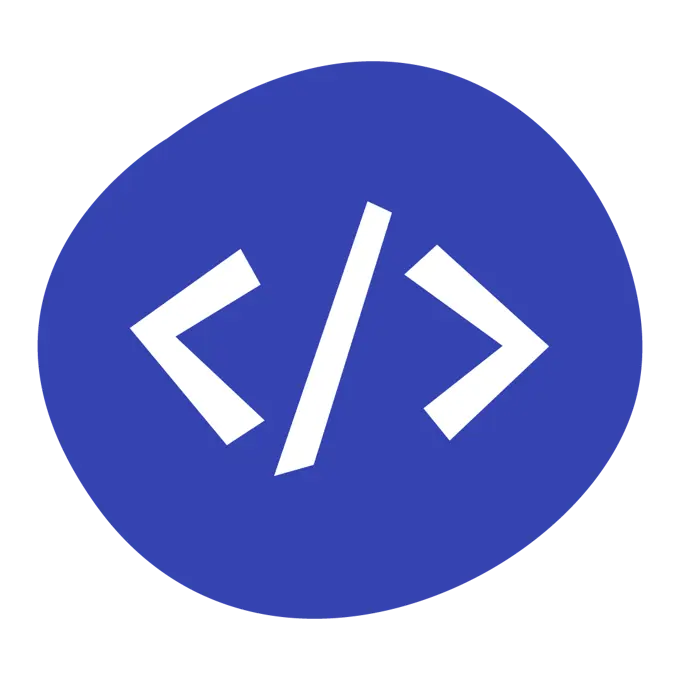Developer and programming abbreviations and acronyms
Ever wondered who this Jason (JSON) guy that all developers talk about is? Or why your developers need A REST or a piece of SOAP when they need to exchange data from one platform to another?
When working with a website, no matter if you are a developer, marketer, editor, SEO professional, or something in between you will stumble across a lot of Acronyms, abbreviations and initialisms in web development.
Why look at acronyms in tech?
It’s easy to get caught up in all of this jargon when working with software development and digital marketing and content editing for the web. But if you want to make it in this field - we are here to help you out. Getting to grips with the abbreviations, initialism and acronyms will make your every day so much easier.
Abbreviations in tech
We use them a lot in our everyday work. Abbreviations are a shortened forms of a word or phrase. This could be the word GUI, which means Graphical User Interface, or AJAX, which stands for Asynchronous JavaScript and XML. But we could also use the word abbreviation like abbrv.
Initialisms in tech
So, now we got the abbreviations in place. But what if I told you that there’s even a subcategory, called initialisms. Yes. That’s right. An initialism is an Abbreviation consisting of initial letters pronounced separately. So our example abbreviation from before, GUI, is an initialism.
Acronyms in tech
We are almost done with today’s English class. We just need to have the term Acronyms in place. An Acronym is an abbreviation that is pronounced as a word. This could be GUI or AJAX.
Enough with the English class for today. Let's dive into it
A list of abbreviations, initialisms, and acronyms in web development
Here's our ever-expanding list of abbreviations within web development. This is by no means a full list, and abbreviations tends to change over time. feel free to scroll through the full list, or click directly to the term you are looking for.
AJAX Acronym
AJAX is an acronym of asynchronous JavaScript And XML. Now, this might not make that much sense - But it actually refers to a group of technologies, that’s used to develop and create applications for the web. We will not dive that much deeper into the various technology components here, but when you combine the technologies in AJAX the web pages appear more responsive and avoiding reload every time a user makes a change to an input. By using AJAX we have a method of initiation client to server communication without page reloads. This gives an improved interaction with the web application. WHich then gives the user more control of their environment.
API Abbreviation
API is an abbreviation that is classed as an initialism. In tech that stands for Application Programming Interface. It might sound like a beer style. But it’s not. It enables two different applications to “talk to each other”. So an API is a part of a server that receives requests and sends responses to other applications.
An API let’s the web application communicate with other web applications. API enables software to be implemented with other software applications, thus simplifying the development process and administration.
API’s is what enables a website to communicate with your e-mail marketing platform, ERP, E-commerce systems, DAM, PIM, and all other sorts of business applications.
ASP.NET Abbreviation
ASP.NET is an abbreviation that is a bit special. ASP is short for Active Server Pages. Whilst .Net refers to the framework, .NET (dotNET).
ASP.NET is an open-source web framework for building web apps on the .NET (dotNET) framework. It is created by Microsoft and allows developers to build dynamic web applications, websites, and the like. The framework works with the standard HTTP protocol
ASP.NET has moved to the ASP.NET Core version, which is cross-platform, but ASP.NET is still supported and updated from Microsoft. If you are interested you can read more in our article: What is ASP.NET?
BLOB acronym
BLOB is an acronym for Binary Large Object. It is a collection of binary data stored as a single entity in a database system.
It is primarily used when storing media, such as audio, images, and video. This differs a bit from other kinds of databases, as they will often store strings or integers. Since BLOBs often store huge files - they will of course also require significantly more space than regular databases.
CDA abbreviation
CDA stands for Content Delivery Application. This is the "true" backend of a CMS since it enables the content to actually be updated on the website. It is within the CDA all the code and logic that we need to transform the provided content in the Content Management Application (CMA) into what becomes visible on the website to the website visitor. If you want to learn more of the features of a CMS we have a full article ready for you.
CDN acronym
CDN stands for Content Delivery Network. A CDN refers to a group of geographically distributed servers that works together in order to deliver content very fast to the visitor of a website or app. With A CDN it’s possible to do quick transfers of the given assets to load content, including HTML pages, JavaScript files, stylesheets, images, and videos. The majority of the big internet service such as social media, Streaming, shopping, news-sites, and the like are served through CDNs.
CMA abbreviation
CMA stands for Content Management Application. It is the frontend user interface of a CMS backend/back office. It is the part of the CMS, where users login and create, edit and update their content. The CMA is one of the main features of a CMS, together with the Content Delivery Application (CDA).
CMS abbreviation
CMS stands for Content Management System. Sometimes also referred to as a Web Content Management System (WCMS). A content management system is software that is used to create and modify content on a website. A CMS often gives the possibility to several users to access everything or some functions to create, read, update and delete (CRUD) content. In a CMS, users can control all their web-based content from the system. This includes text, graphics, video, and audio. We have written a much deeper article on the topic, “What is a CMS”.
CRUD acronym
What does CRUD mean? It stands for Create, Read, Update and Delete. It is an acronym within programming. These four functions are necessary to implement a persistent storage application. With persistent storage, we refer to any device that can store data that retains power after the power is turned off, such as hard disks.
Each of the four functions is important when it comes to database interactions.
CSS abbreviation
CSS is an acronym that stands for Cascading Style Sheets which is a style sheet language that is used to express how a structured document like an HTML document should look. Together with HTML and JavaScript, CSS is one of the cornerstones of the World Wide Web.
CSS vs HTML:
Both languages are core elements in building web pages, but what differences are there, and how do they work together? The short answer is that a site’s HTML defines a site’s content and structure, while a site’s CSS modifies and defines the design and display of the site’s different HTML elements.
Why is CSS important?
CSS is what gives web designers and developers the ability to create outstanding-looking websites. When Looking at the difference between HTML and CSS, you should think of HTML as the textual content and CSS as the visual structure and layout of your document. Or put this way - CSS is the “look and feel” of your website. Another important role CSS has is creating a coherent site, by using the same style sheet on multiple webpages as well as adapting the presentation of the site to different platforms, while keeping the same design elements.

DNS abbreviation
The acronym DNS stands for Domain Name System. A DNS is what lets users type in any URL within their browser and find the desired destination - without having to navigate through IP addresses subfolders, etc. on servers to find a webpage.
We could refer to it as the phone book of the internet. We access the website through an address (domain) like umbraco.com or wikipedia.org. But computers and web browsers interact through Internet Protocol (IP) addresses. The Domain Name System (DNS) translates the requested domain into an IP address that computers and browsers then will load the page.
DOM abbreviation
DOM is an acronym for Document Object Model. DOM is a cross-platform and language-independent model that represents HTML documents in a tree structure which makes it easier to manage and maintain each part of the document as each node is seen as an object within the document. By accessing the document with the DOM method, it’s possible to get programmatic access to the tree and from here it’s possible to change the structure, style, or content of a document. Within the DOM there are various types of nodes. The <HTML> tag always goes on top, and is referred to as a “root node”. The rest of the nodes are referred to as “child nodes”. At the very bottom of this object model are the leaves. These usually contain element’s attributes, values, and events.
FTP abbreviation
FTP is an initialism that stands for File Transfer Protocol. It is a communication system that allows transferring files between computers. If a user is granted access, with a username and password, it’s possible to access a remote computer on a network (most often a server, called an FTP-host) where the user is then able to either get or receive files.
An FTP connection is often used to access a web server to upload or download files for maintaining a website.
GraphQL acronym
GraphQL is an open-source data query and manipulation language originally developed and released by Facebook in 2012. It was developed by Facebook to help them rebuild their native mobile applications and because they needed "a data-fetching API powerful enough to describe all of Facebook, yet simple enough to be easy to learn and use by our product developers".
GraphQL has since been made open source in 2015 and is now governed by the GraphQL Foundation to ensure its development will happen in an open and neutral way. Learn more about GraphQL here, and understand how we use it for Umbraco Heartcore.
GUI abbreviation
GUI is an abbreviation and initialism for Graphical User Interface. It’s a system of interactive components that are presented visually for the user of computer software. A graphical user interface displays objects that convey information and actions that can be taken by the user. These can be objects that change in size, color, or visibility.
A Graphical User Interface often includes objects like icons, cursors, and buttons. Sometimes they are even further developed with sound, animations, or shadows. By having a visual representation and user interface it’s possible for users to use the computer software without having to know commands.
HTML abbreviation
HTML is an acronym for Hypertext Markup Language and is the standard language for documents that have been designed to be displayed in a web browser. You have certainly met HTML in one way or another, as all web pages on the Internet are written using a version of HTML.
HTML vs CSS:
Both languages are core elements in building web pages, but what differences are there, and how do they work together? The simple answer is that a site’s HTML defines a site’s content and structure, while a site’s CSS modifies and defines the design and display of the site’s different HTML elements.
Why is HTML important?
HTML describes a given web page’s structure and layout, this is done through a series of tags and attributes. It is also through the HTML a web page can be published with apps such as video clips, sound clips or spreadsheets and also simple things such as text and photos.In short, the HTML tells your Internet browser what a given web page is intended to contain and how it is structured.

HTTP abbreviation
HTTP means Hypertext Transfer Protocol. It is an Application Layer Protocol over which information is sent to your web browser to the website, that you browse. The browser and the website communicate with each other through data, which is sent in plain text. The problem with plain text is, that it can be intersected and read by others.
Therefore the HTTP protocol has been updated to a more secure version, called HTTPS; Hypertext Transfer Protocol Secure.
When the browser requests a webpage it will get an HTTP status code in return. If you request a specific page of a website that does not exist anymore you might get a 404 status code in return - but in fact, there are 65 different HTTP status codes - you can see a full list of HTTP status codes here.
IaaS acronym
IaaS means Infrastructure as a Service. It is a kind of Cloud computing service, which offers storage, networking, and computing resources on-demand with a pay-as-you-go business model. It's a way for businesses to reduce maintenance of on-premises data centers and saving money on physical hardware, thus enabling the business to scale its IT resources both up and down when required.
IaaS is a Cloud service alongside SaaS and PaaS.
IDE acronym
IDE is an acronym for Integrated Development Environment. It is the software suite used by developers in a development environment and is designed to maximize productivity and efficiency for the developer. We have previously covered the subject in this article; what is a development environment and IDE.
IIS acronym
IIS stands for Internet Information Services but was also previously known as Internet Information Server. It is a Windows Server-based web application, which is used for delivering content for websites to website visitors.

JAMstack abbreviation
JAMstack is an abbreviation for JavaScript, APIs, and Markup (JAM) it describes a modern web development architecture. JAMstack cannot be defined as an individual technology, but a way of building applications and websites.
Instead of using a site builder or a CMS in the traditional way, a website built in the JAMstack way handles the three components in a decoupled architecture. If you are interested in more info on this approach, we have created a complete article on What is JAMstack
JS abbreviation
JS is an abbreviation for JavaScript. It is a scripting language that is used to create and control dynamic content on a webpage. This can include all that moves on the website, all that refreshes or otherwise is changing on the screen, without any user input to manually reload the web page, this could be sliders, image carousels, autocomplete suggestions, or other interactive elements.
JSON acronym
JSON means JavaScript Object Notation. It is a standard file format for data interchange. It uses text that can be read and understand by humans to store and transmit data objects between web servers and applications. It is a very commonly used data format. It is a text-based representation of structured data, with key-value pairs and ordered lists.
MVC abbreviation
MVC is an initialism of Model, View, and Controller, which is a design pattern within the software. It is very widely used when developing interfaces that have the program logic divided into three interconnected elements - Model, views, and Controllers. This is a way to have general representations of information separated from how it is presented to and accepted by the user. You can dive deeper into how MVC is used in Umbraco here.

OSS abbreviation
Open-source software is software that is made available under a license in which the publisher provides users the rights to make changes and copies. It is developed using collaborative resources and often maintained by a global community of developers. The source code of open-source software is accessible to everyone and any member of the community can contribute to the code by submitting pull requests or making suggestions for new features.
Umbraco is Open source software
Umbraco CMS is an open-source CMS and it operates under the MIT license. The open-source nature of Umbraco means that anyone can contribute to Umbraco’s source code; currently, we have an over 200-thousand-large community that makes Umbraco better every day.
Read more about Open Source Software
PaaS acronym
PaaS means Platform as a Service but is also referred to as Application Platform as a Service. It is a specific category of cloud computing services. PaaS gives the customer a complete development and deployment environment in the cloud, that gives developers the necessary resources to deliver cloud-based applications. The business model for PaaS is a pay-as-you-go basis.
PaaS is a specific group within SaaS (Software as a Service)
PWA acronym
PWA is an abbreviation for Progressive Web Application. It’s a type of web application where the software is delivered through the web. It is generally built with commonly associated technologies such as HTML, CSS, and JavaScript. It’s created with the intent to work on any platform or device that has a standards-compliant browser. This includes both desktop and mobile devices. This means it’s rather quick to develop a PWA compared to a native app. It’s also possible to offer functionalities from apps like push notifications, offline support, and the like.
REST abbreviation
REST is an abbreviation that stands for Representational State Transfer. It is an architectural style within software development. REST is a widely accepted set of guidelines when it comes to creating stateless and reliable web services. REST is an alternative to methods like SOAP and the like. It was developed at the end of the 1990s and has changed the landscape of APIs.
SaaS acronym
SaaS is an acronym for Software as a Service. It is a licensing and delivery model for software, where it is licensed on a subscription model. It is also known as on-demand software.
A SaaS product works through a cloud delivery model. A software provider will host the software and the associated data on a cloud-based hosting setup. The software is then accessible to a compatible device with an internet connection.
Umbraco offers a SaaS solution
An example of a SaaS product is Umbraco Cloud, where we offer our CMS as a Cloud-based version. This means that our customers are not tasked with the tasks of setting up or updating our CMS. We take care of that for them.

SDK abbreviation
SDK is an abbreviation for Software Development Kit.
A Software Development Kit provides a set of tools, libraries documentation, code samples processes, or guides that enable software developers to create software for a specific platform.
SEO acronym
SEO is an acronym that stands for search engine optimization. Working with SEO is a strategic approach to optimize websites and pages to be found by people searching for relevant terms through search engines. There are various tools and techniques when it comes to SEO. You can dive into our 3-part series, Is your CMS SEO-Friendly if you want to learn more about SEO.
SOAP acronym
SOAP is an acronym that stands for Simple Object Access Protocol. SOAP is a messaging protocol based on XML. It’s used to exchange information between computers. It’s developed to be an intermediate language between two or more applications built on different programming languages in order to communicate with each other and reducing the effort that needs to be put into development.
SQL abbreviation
SQL is an abbreviation for Structured Query Language. It is used to access and manipulate databases. SQL is useful when you need to handle structured data where there are relations between entities and variables. A developer will use SQL statements to update or retrieve data from a database.
SVG acronym
SVG is an initialism for Scalable Vector Graphics. SVG is an XML-based markup language for vector image formats for two-dimensional graphics with support for interactivity and animation. Compared to more classic formats like JPEG or PNG the SVG format allows for rendering without loss of quality, no matter the rendered size.
URL acronym
URL is an abbreviation for Uniform Ressource Locator. It is often referred to as a web address. A URL is referring to a web resource and specifies the location of the resource on the network.
Typically a web browser displays the URL of a webpage in the address bar.
UX abbreviation
UX is an abbreviation for user experience. It refers to user experience design, it's a human-first approach to how users, clients, visitors, and guests interact with a company. Despite that it's very widespread to be used in tech, it's not bound to any medium, it can be implied to anything from websites and apps to vending machines, customer service, or even how a physical shop is designed. In other words, the purpose of UX design is to make easy, efficient, and pleasant experiences for the user.
WCM abbreviation
WCM means Web Content Management. It is often used interchangeably with CMS, and they are almost the same thing. But a WCM only handles web content. In functionality they are almost the same - they are used to create and manage content. But the WCM is created specifically to create and manage content for the web. Please read the following article if you want to know more about what's the difference between WCM and a CMS.
WWW abbreviation
WWW is an abbreviation of the World Wide Web. Which is what we generally refer to as the web. In general terms, it is an information system where a document or other web resources like images or video can be identified by a URL. The documents are accessible through the HTTP protocol and are accessible through a web browser. It is very often labeled as the internet - which it is not synonymous with.
WYSIWYG abbreviation
WYSIWYG is an acronym that stands for What You See Is What You Get. Within the world of software, it is a system that allows for content to be edited in a similar form to how it is "printed" or displayed. This can be in apps, web pages, presentation slides, or something like a big screen at a stadium.
In general, WYSIWYG indicates the ability to manipulate the layout of a document, without having to type layout commands like HTML and CSS - or any other kind of markup language. Think about when you are working with text editing software - You know exactly what will be bold, and italic, just by looking at the formatting you have set the tool to use.
XML abbreviation
XML is an abbreviation for Extensible Markup Language. It is a markup language that sets a definition for encoding documents in a format that is readable by both humans and machines. XML is often used to describe data, thus making it a flexible way to create and share electronic data via the internet. XML uses tags to define the structure of the document, and describe how it should be stored and transported.